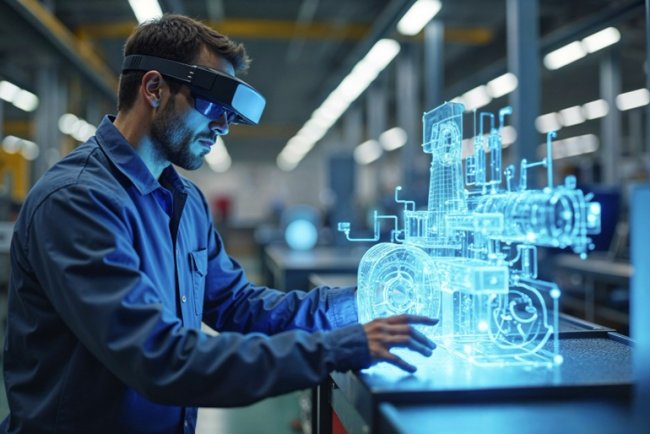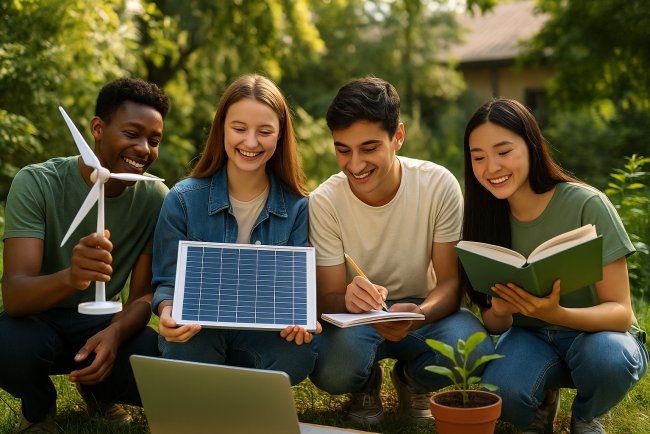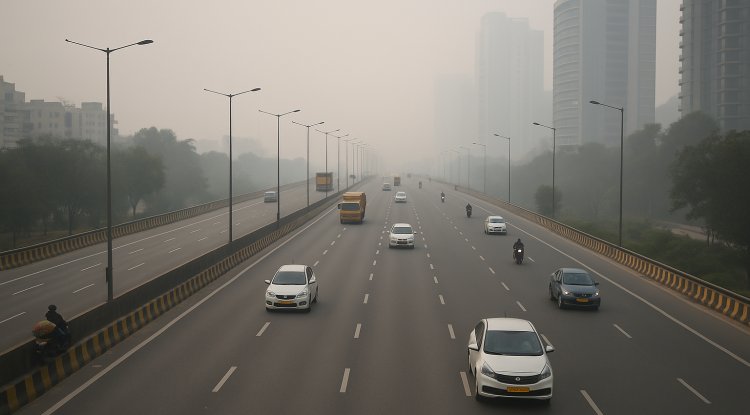The Big Gap: How Climate Action is Reaching Local Communities
The climate fight won’t be decided in one big moment. It will be won through many small, smart steps, writes the author

For years, climate change has felt like a distant story—too big, too far away. We have seen pictures of melting ice caps, rising temperature graphs, and global meetings where leaders promise to cut carbon.. This global narrative is both critically important and has created a huge disconnection. For a city government official, smallholder farmer, or local community leader, the challenge has always seemed too big and abstract to handle. This is "knowledge-action gap" in its most extreme: we know the world is in trouble, but the ability to have the tools and information to be able to act has never correlated with the scale of our own lives.
But a quiet revolution is underway, one that is not defined by global treaties but by hyperlocal data. As explored in the perspective "Zooming in for climate action," a powerful convergence of technology is finally closing this gap. We are shifting our focus from the macro to the micro, and in doing so, we are unlocking the most potent force for change: localised, targeted action.
This transformation is fuelled by the "hyperlocal tech stack." The falling cost of Internet-of-Things (IoT) sensors, the ubiquity of mobile phones, the analytical power of AI, and the increasingly granular resolution of satellite imagery are creating an unprecedented flow of actionable data. For instance, a Swiss precision agriculture project, "Pflanzenschutzoptimierung mit Precision Farming" (Optimisation of plant protection using precision farming) PFLOPF, uses map-based tools to reduce the use of plant-protection products by at least 25%, directly protecting local soil health. While the choice to buy an electric vehicle over a combustion engine vehicle is undoubtedly a personal one, the impacts of EVs are hyperlocal. Studies show that lifecycle emissions from electric vehicles are 50-70% less than traditional combustion engine vehicles, measurable evidence of pollution reduction that improves air quality, a street at a time. This is the beauty of hyperlocal tech - it makes solutions as momentous as the problem!
The GSMA report on "Emerging Trends in Climate Tech Innovations" shows this revolution is in the making, and it is a powerful trend in India as well. Nearly 90% of the innovations backed by GSMA come from local entrepreneurs who know their communities well. In India, agritech startup Fasal uses small sensors on farms to send weather and soil updates straight to farmers’ phones. The system tells them exactly when to water or protect crops. This helps cut water use by half and pesticide costs by more than half, while improving harvests. It’s not a general forecast but advice for each plot of land—helping farmers become smarter and stronger. These tools don’t just help them adapt; they help them earn better.. In Kenya, the Aquarech IoT platform increases the income of fish farmers. In Somaliland, a blockchain application by Dayaxa provides resin harvesters with fair prices. The fundamental principle is very similar here; when we provide the individual with accurate and specific information, it leads to economic and environmental resilience.
While these examples illustrate resilience in rural settings, the hyperlocal perspective is also important for mitigation in urban centres, which represent around 71% - 76% of the global final energy-related CO2 emissions. Indian startups are also making advances in this arena. Ambee provides hyperlocal air quality data down to the street level, allowing citizens and local municipal governments to identify pollution sources and create customised interventions. In the face of mounting urban water stress, WEGoT's IoT solutions monitor water consumption at the individual tap level in apartment buildings, helping communities save over 500 million litres of water by detecting leaks and encouraging conservation. This is "zooming in" to its logical conclusion—making a city's resource crisis a manageable, household-level challenge.
However, technology alone is not a panacea. The most brilliant sensor is useless without a human network to deploy, interpret, and act on its insights. This is where the ecosystem becomes paramount. The final, crucial piece of this hyperlocal puzzle is the empowerment of local champions. We need platforms that connect these innovators and share what works.
The climate fight won’t be decided in one big moment. It will be won through many small, smart steps. A city official is tracking emissions street by street. A farmer getting the right weather alert at the right time. Experts sharing what works around the world. By looking closely at local needs, the world is finally putting climate action in people’s hands—helping each community build its own strength, one step at a time.
Views are personal
What's Your Reaction?
















